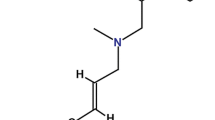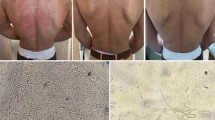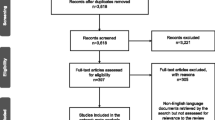Summary
The purpose of this study was to perform a government-perspective economic analysis of the most widely used topical creams [namely, ciclopirox (CIC), clotrimazole (CLO), ketoconazole (KET), miconazole (MIC), and terbinafine (TER)]; for the treatment of 2 types of dermatophyte skin infections: dermatophytosis major (excluding onychomycosis) and dermatophytosis minor.
A 3-phase approach was used. In phase I, experts were assembled to identify the standard approach for management of fungal infections and a decision tree was constructed to model the process; in phase II, meta-analysis was used to determine success, failure, and relapse rates; and in phase III, economic analyses were performed including cost of regimen, total expected cost and cost-effectiveness analysis. Sensitivity analyses (robustness analyses) were also performed in phase Ill.
It was found that while TER was successful following 1 week of administration for minor infections and after 2 weeks for major infections, duration of drug treatment was usually twice that time. Other comparators (CIC, CLO, KET and MIC) took 4 weeks to achieve a successful outcome. In addition, an extra 2 weeks were often needed to clear both types of infections because the comparators are fungistatic, whereas TER is fungicidal. In the total expected cost analysis. TER had the lowest overall cost of treating patients for both infection categories. It was also responsible for the highest number of disease-free days and, consequently, the lowest cost per disease-free day.
Sensitivity analyses confirmed that TER was the most cost-effective topical agent for treating dermatophytosis major (excluding onychomycosis) and dermatophytosis minor.
Similar content being viewed by others
References
Prevalence, morbidity and cost of dermatological diseases. Invest Dermatol 1979: 75: 395–401
Infections. J Invest Dermatol 1979; 73: 452–9
Leyden JJ. Progression of in lnterdigital infections from simplex to complex. J Am Acad Dermatol 1993: 28: 57–11
Jue SG, Dawson GW, Brogden RN. Ciclopirox olamine 1% cream: a preliminary review of its antimicrobial activity and therapeutic use. Drugs 1985; 29; 330–41
Schuster I, Ryder NS, Allylamines–mode and selectivity of action compared to azole antifungals and biological fate in mammals. J Dermatol Treat 1990: 1 Suppl. 2: 7–9
Laupacis A, Feeny D, Detsky AS, et al. How attractive does a new technology have to be to warrant adoption and utilization? Tentative guidelines for using clinical and economic evaluations. Can Med Assoc J 1992: 146: 473–81
Hillman AL, Eisenberg JM, Pauly MV, et al. Avoiding bias in the conduct and reporting of cost–efectiveness research sponsored by pharmaceutical companies. N Engl J Med 1991: 324: 1362–5
Krogh CM, editor. Compendium of pharmaceutical specialties (Canada). Toronto; Canadian Pharmaceutical Association, 1993
Einarson TR, Leeder JS, Koren G. A method for meta–analysis of epidemiologic studies. Drug Intell Clin Pharm 1988: 22: 813–24
Lauhranta J. Comparative and safety of amorolfine nail lacquer 2% versus 5% once daily. Clin Exp Dermatol 1992: 17 Suppl. 1: 41–3
del Palacio A, Gip I, Bergstraesser M, et al. Dose–finding study of amorolfine cream (0.125%, 0.25% and 0.5%) in the treatment of dermatomycoses. Clin Exp Dematol 1992: 17 Suppl. 1; 50–5
Cullen St, Rex IH, Thorme EG. A comparison of a new antifungal agent, 1 percent econazole nitrate (spectazole) cream versus 1 percent clotrimazole cream in the treatment of intertriginous candidosis. Curr Ther Res 1984: 35 (4): 606–9
Cullen SI, Rex IH, Thorne EG. A comparison of a new an1;fungal agent. 1 percent cronazole nilrate (special) cream versus 1 percent clotrimazole cream in the treatment of intertriginous candidosis. Curr Ther Res 1984: 35 (4): 606–9
Cuce LC. Tolciclate versus miconazole a double–blind trial in patients with dermatomycosis. J Int Med Res 1980; 8: 144–7
Martinez-Roig A, Torres-Rodriguez JM, Bartlett A, Double blind study of ketoconazole and griseofulvin in dermatophyloses. Pediatr lnfect Dis J 1988: 7: 37–40
Lalosevic J, Rojas R, Astorga E, et al. Bifonazole cream in the treatment of superficial candidosis. Dermatologica 1984: 169 Suppl. 1: 99–106
Difonzo EM, Palleschi GM, Vannini P, et al. Therapeutic experience with ketoconazole. Drugs Exptl Clin Res 1986: XII (5): 397–403
Hay RJ. Current treatment of dermatophytoses. Acta Derm Venereol Suppl (Stockh) 1986; 121; 117–23
Ganor S, Radai S, Shneur R. Tinea inguinalis treated wilh miconazole cream. A double–blind study. Isr J Med Sci 1977; 13 6): 587–9
Hernandez-Perez E. Bifonazole Cream; once–a–day application every second day in tinea cruris and tinea corporis. Dermatologica 1984: 169 Suppl. 1: 93–8
Kostiala I, Kostiala AAI, Elonen E, et al. Comparison of clotrimazole and chlorhexidine in the topical treatmenl of acute fungal stomatitis in patients with hematological malignancies. Curr Ther Res 1982; 31 (5): 752–63
Lalosevic J, Rojas R, Astorga E, et al. Bifonazole cream in Ihe treatment of superficial candidosis. A double–blind comparative study. Dermalologica 1984; 169 Suppl. 1: 99–106
Clayton YM, Knight AG. A clinical double–blind trial of topical miconazole and clotrimazole against superficial fungal infections and erythrasma. Clin Exp Dermatol 1976; 1; 225–32
Athow-Frost TAM, Freeman K, Mann TA. et al. Clinical evaluation of fenticonazole cream in cutaneous fungal infections: a oomparison with miconazole cream. Curr Med Res Opin 1986: 10 (2); 107–16
Soyinka F, Bifonazole in the treattnent of fungal skin infections in the tropics: a dinical and mycological study. Curr Med Res Opin 1997: 10 (6): 390–6
Stettendorf S. Tolerability and efficacy of bifonazole in dermatomycoses. Drug Res 1983: 33 (1): 750–4
Alpermann HG, Schutz E. Zur Pharmakologic und Toxikologic von Cyclopiroxolamin. Drug Res 1981, 31 (11): 1328–32
Villars V, Jones TC, Clinical efficacy and tolerability of terbinafine (Lamisil)–new topical and systemic fungicidal drug for treatment of dermatomycoses. Clin Exp Dermatol 1989: 14: 124–7
Stettendorf S, Bifonazole–a synopsis of clinical trials worldwide. Status and outlook. Dermatologica 1984: 169 Suppl. 1; 69–76
Reinel D, Clarke C, Comparative efficacy and safety of amorolfine nail lacquer 5% in onychomycosis. once–weekly versus twice–weekly. Clin Exp Dermatol 1992: 17 Suppl. 1; 44–9
Belli L, Galimberti R, Negroni R, et al. Treatment of tinea corporis or tinea cruris with bifonazole 1% gel: an open, multicentre study. Pharmatherapeutica 1985: 4 (2): 106–8
Nolting S, Semig G, Friedrich HK, et al. Double–blind comparison of amorolfine and bifonazole in the treatment of dermatomycoses. Clin Exp Dermatol 1992: 17 SuppI. 1: 56–60
Clayton YM, Conner BL. Comparison of clotrimazole cream. Whitfield’s ointment and nystatin oinment for the topical treatment of ring worm infections, pityriasis versicolor, crythrasma and candidiasis. Br J Dermatol 1973: 89: 297–303
Plempel ER, Buchel KH. Antimycotic effIcacy of bifonalzole in vitro and in vivo. Drug Res 1983: 33 (1): 517–24
Qadripur SA, Horn G, Hohlet T, Zur Lokalwirksamkeit von Cyclopiroxolamin bei Nagelmykosen. Drug Res 1981; 31 (11): 1369–72
Belli L, Galimberti R, Negroni R, et al. Treatment of superficial candidiasis with bifonazole 1 gel. Pharmatherapeutica 1985: 4 (2); 102–5
Galimberti RL, Belli L, Negron R, et al. Treatment of tinea pedis interdigitalis with bifonazole, 1% gel. Dermatologica 1984: 169 Suppl. 1: 107–10
DerSimonian R, Laird N. Meta–analysis in clinical trials. Controlled Clin Trials 1986: 7: 177–88
Velanovich V. Meta–analysis for combining Bayesian probabilities. Med Hypoth 1991: 35: 192–5
Wu YC, Chuan MT, Lu YC. Efficacy of ciclopiroxolamine 1% cream in onychomycosis and tinea pedis. Mycoses 1991: 34: 93–5
Cuce LC. Sulconazole nitrate 1% crearn vs clotrimazole 1% cream in the treatment of tinea pedis. Curr Ther Res 1989; 45 (3): 421–7
Evans EGV, Dodman B, Williamson DM. et al. A double–blind comparison of one week of terbinafine 1% cream compared to four weeks of clotrimazole 1% cream in the treatment of tinea pedis. BMJ 1993 Sep 11; 307 (6905): 645–7
Lassus A, Forstronl S, Salo O. A double–blind comparison of suloconazole nitrate 1% cream with clotrimazole 1% cream in the treatment of dermatophytoses. Br J Dermatol 1983: 108: 195–8
Smitb EB, Graham JL, Ulrich JA. Topical clotrimazole in tinea pedis. South Med J 1977: 70 (1): 47–8
Smith EB, Zaias N, Savin R. Topical terbinafine in tinea pedis [abstract]. J Clin Pharmacol 1987: 27: 720
Greer DL, Topical treatment for moccasin–type tinea pedis. J Am Acad Dermatol 1987: 3 (Pt I): 554–8
Woscoff A, Carabeli S. Treatment of tinea pedis with sulconazole nitrate 1% cream or miconazole nitrate 2% cream. Curr Ther Res 1986: 39 (5): 753–7
Tanenbaum L, Anderson C, Rosenberg MJ. et al. Sulconazole nitrate 1.0 percent cream: a comparison with miconazole in the treatment of tinea pedis and tinea cruris/corporis. Cutis 1982: 30: 105–1
Evans EGV, James IGV, Joshipura RC. Two–week treatment of tinea pedis with terbinafine (Lamisil) 1% cream: a placebo–controlled study. J Permatol Treat 1991; 2: 95–7
Bergstresser PR, Elewski B, Hanifin J. Topical terbinafine and clotrimazole in tinea pedis. Comparison of cure and relapse rates witb 1–and 4–week regimens of terbinafine and clotrimamzole 1% cream in patients with interdigital tinea pedis: results of a double–blind, multicenter trial. J Am Acad Dermatol 1993 Apr: 28 (4): 648–51
Savin RC. Treatment of chronic tinea pedis (athlete’s foot type) with topical terbinafine. J Am Acad Dermatol 1990: 23: 786–9
Smith EB. A clinical trial of topical terbinafine (a new allylamine antifungal) in the treatment of tinea pedis. J Am Acad Dermatol 1990: 23 (4 Pt 2), 790–4
Fredriksson T, Savopoulos C. Doppelblind-Vergleichsstudiemit Cyclopiroxolamin–Creme und Placebo–Creme bei Dermatophytosen. Drug Res 1981: 31 (8A): 1376–8
Shimazaki T. Clinical evaluation of ciclopirox–olamine on tinea cruris. Nichinibon J Dermatol 1978: 40: 351–5
Tarle SF. Estudo comparativo duplo–cego com ciclopirox e clotrimazol sub as formas de creme no tratamento das micosas superficiais. Rev Bras Med 1980: 37: 316–21
Bogaert H, Cordero C, Ollague W, et al. Multicentre double–blind clinical trials of cidopirox olamine cream 1% in the treatment of tinea corporis and tinea cruris. J Int Med Res 1986: 14: 210–6
VanDersarl JV, Sheppard RH, Clotrimazole vs haloprogin treatment of tinea cruris. Arch Dermatol 1977: 113: 1233–5
Greer DL. Topical treatment for moccasin–type tinea pedis. J Am Acad Dermatol 1987: 3 (Pt 1): 554–8
Avila JM. Treatment of dermatomycoses with sulconazole 1% nitrate creame or miconazole nitrate 2% cream. A double–blind comparative study Curr Ther Res 1985: 38 (2): 328–33
Fredriksson T. Treatment of dermatomycoses with topical tioconazole and miconazole. Dermatologica 1983: 166 Suppl. 1; 14–9
Gentles JC, Jones GR, Roberts DT. Efficacy of miconazole in the topical treatment of tinea pedis in sportsmen. Br J Dermatol 1975: 93, 79–84
Ongley RC. Efficacy of topical micanazole treatment of tinea pedis. Can Med Assoc J 1978: 119: 353–4
Berman B, Ellis C, Leyden J. et al. Efficacy of a 1–week, twice dail y regimen of terbinafine 1% cream in the treatment of interdigital tinea pedis. J Am Acad Dermatol 1992: 26 (6): 956–60
Greer DL, Jolly HW. Treatment of tinea cruris with topical terbinafine. J Am Acad Dermatol 1990: 4 (Pt 2): 800–4
Millikan LE. Efficacy and tolerability of topical terbinafine in the treatment of tinea cruris. J Am Acad Dermatol 1990: 23 (4 Pt 2); 795–9
Ontario Drug Benefit Formulary/Comparative Drug Index No. 33. Toronto; Ontario Ministry of Health, 1993 Feb
A survey of drug Store trends 1992: survey of findings. Toronto; Maclean Hunter, 1992
Schedule of benefits: physician services under the Health In surance Act. Toronto: Ministry of Health, October 1, 1992
Provincial Drug Benefit Programs. 6th ed. Ottawa; Canadian Pharmaceutical Association, October, 1991
Amdt KA. Manual of dermatologic therapeutics, Boston: Little Brown & Co., 1992
Balfour JA, Faulds D. Terbinafine: a review of its pharmacodynamic and pharmacokinetic propenies, and therapeutic potential in superficial mycoses. Drugs 1992: 43: 259–84
Author information
Authors and Affiliations
Rights and permissions
About this article
Cite this article
Shear, N.H., Einarson, T.R., Arikian, S.R. et al. Pharmacoeconomic Analysis of Topical Treatments for Tinea Infections. Pharmacoeconomics 7, 251–267 (1995). https://doi.org/10.2165/00019053-199507030-00009
Published:
Issue Date:
DOI: https://doi.org/10.2165/00019053-199507030-00009




